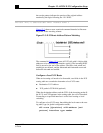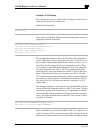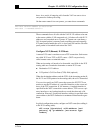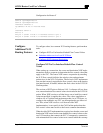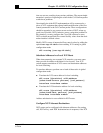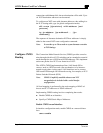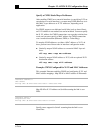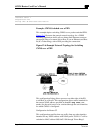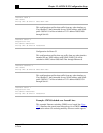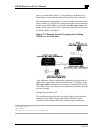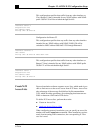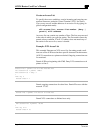
Chapter 12: AI2524 X.25 Configuration Steps
August 1997 Page 12-39
2524UM
tion was not true, resulting in mysterious problems. The current imple-
mentation's practice of signaling the values in the Call Confirm packet
avoids these problems.
Occasionally the older XOT implementation will be connected to a
piece of X.25 equipment that cannot handle modification of the flow
control parameters in the Call Confirm packet. These configurations
should be upgraded to use a more recent version of XOT; when up
grade is not possible, XOT's behavior causes a migration problem. In
this situation, you may configure the Cisco IOS software to cause
XOT to obtain unspecified flow control facility values from the desti-
nation interface's default values.
Modify XOT's source of unencoded flow control values by adding the
option
use-tcp-if-defs
when enabling X.25 routing in global
configuration mode:
x25 routing [use-tcp-if-defs]
Substitute Addresses in a Local X.25 Route
When interconnecting two separate X.25 networks, you must some-
times provide for address translation for local routes. Your X.25
switch supports translation of X.25 source and destination addresses
for local switching.
To translate addresses, perform one or both of these tasks in global
configuration mode:
z
Translate the X.25 source address for local switching.
x25 route [
#position
]
x121-address
[substitute-source
pattern
] [cud
pattern
]
interface
interface number
z
Translate the X.25 destination address for local switching.
x25 route [
#position
]
x121-address
[substitute-dest
pattern
]
[
cud
pattern]
interface
interface number
Address substitution is not available for XOT routes.
Configure XOT Alternate Destinations
XOT routes can be configured with alternate addresses. On routing
call, XOT will try each XOT destination host in sequence; if the TCP



